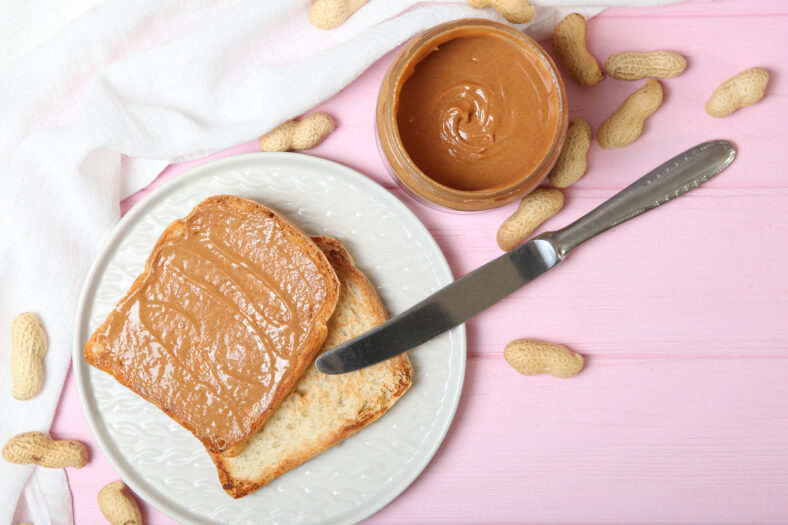Scientists Have Figured Out A Way To Help Children Who Are Allergic To Peanut Butter

For kids with peanut allergies, even just a whiff of peanut butter can feel like it might trigger some kind of reaction. What if there was a way to help them build tolerance?
Scientists are finding new ways to train the immune system so that a little peanut butter on toast doesn’t have to be a disaster waiting to happen.
In a new study, researchers implemented a treatment strategy that involves eating gradually increasing doses of store-bought peanut butter over a period of 18 months.
The participants were children who could tolerate the equivalent of at least half a peanut at the start of the study, which is considered a high threshold of tolerance.
By the end, they were able to consume three tablespoons of peanut butter without having an allergic reaction.
“Children with high-threshold peanut allergy couldn’t participate in previous food allergy treatment trials, leaving them without opportunities to explore treatment options,” said Jeanne Marrazzo, the director of the National Institutes of Health’s National Institute of Allergy and Infectious Diseases.
“Today’s report focuses on this population and shows that a very safe and accessible form of therapy could be liberating for many of these children and their families.”
Currently, the food allergy treatments approved by the Food and Drug Administration are tested in children with low-threshold peanut allergy, meaning that they cannot tolerate the equivalent of even half a peanut.
These treatments are designed to minimize the likelihood of a reaction to a small amount of peanut if accidentally exposed to it.

Sign up for Chip Chick’s newsletter and get stories like this delivered to your inbox.
In the United States, an estimated 800,000 children have high-threshold peanut allergies, and these treatments do not apply to them. As a result, they are left with just one management strategy and that is to avoid peanuts altogether.
The researchers wanted to test a low-cost treatment strategy that was easy to implement in order to help kids with high-threshold peanut allergy be able to tolerate more peanut protein than they already did.
The trial involved 73 children between the ages of four and 14. Almost 60 percent of the children were white, 19 percent were Asian, 1.4 percent were Black, and 22 percent were mixed race.
The kids were randomly assigned into groups to either test the new treatment or continue avoiding peanuts.
Those in the peanut-ingestion group began with a daily dose of one-eighth teaspoon of peanut butter. The dose was gradually increased every eight weeks up to one tablespoon of peanut butter or the same amount of a different peanut product like peanut flour or candies.
The dose increases only took place during medically supervised visits at the study site. During at-home dosing, no epinephrine was needed to treat severe allergic reactions for the children in the peanut-ingestion group.
After the treatment period was up, the peanut-consuming children participated in a supervised food challenge to see how much peanut butter they could eat without an allergic reaction.
All 32 kids could tolerate nine grams of peanut protein, which equated to three tablespoons of peanut butter. In the avoidance group, only three of 30 children could tolerate nine grams of peanut protein.
The results were promising, so the researchers now want to determine whether the same treatment strategy could work for other food allergens.
The study was published in NEJM Evidence.
More About:News





